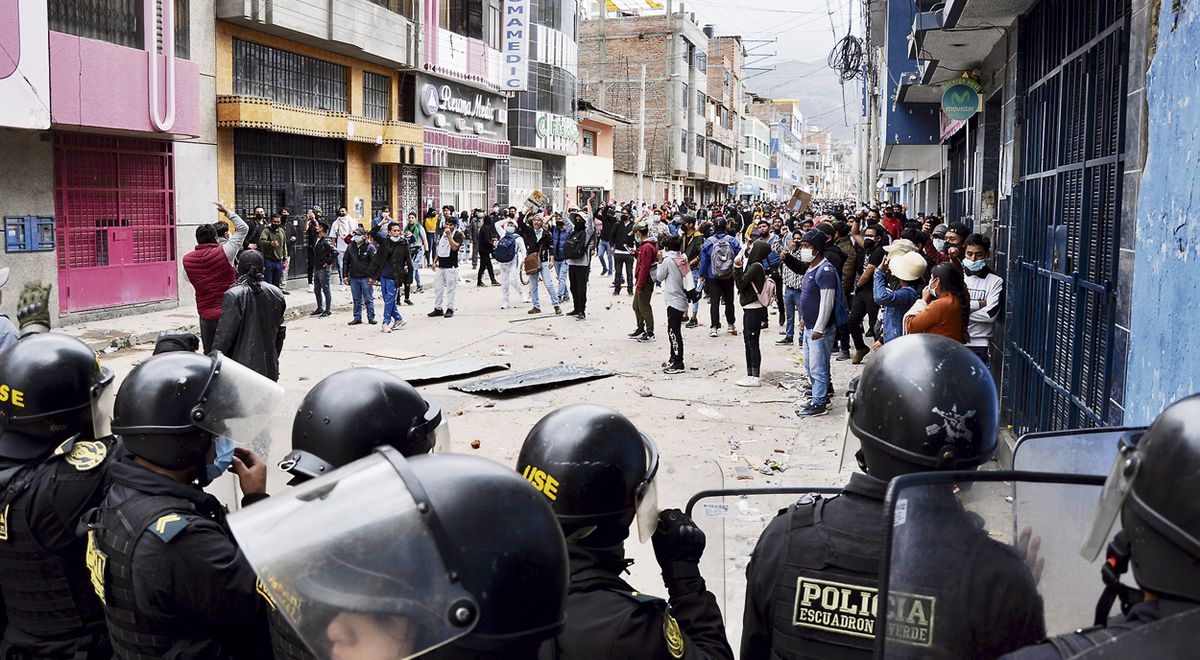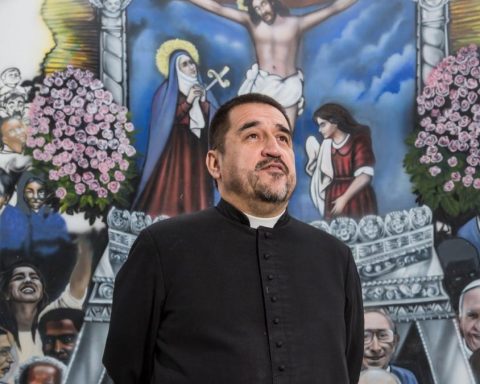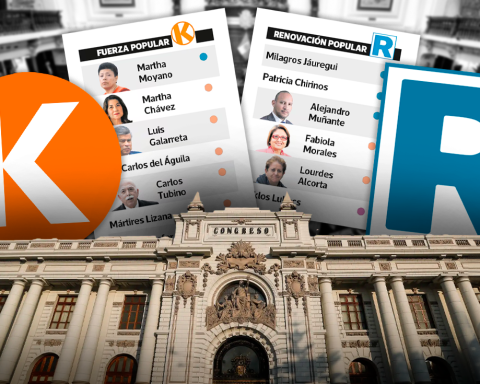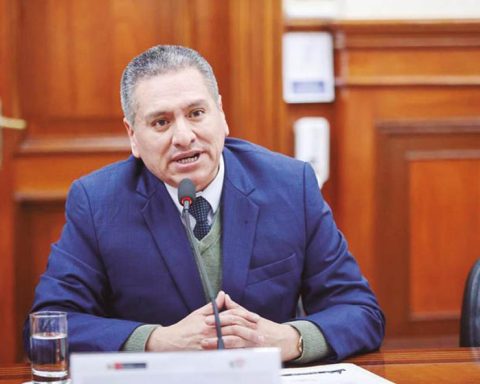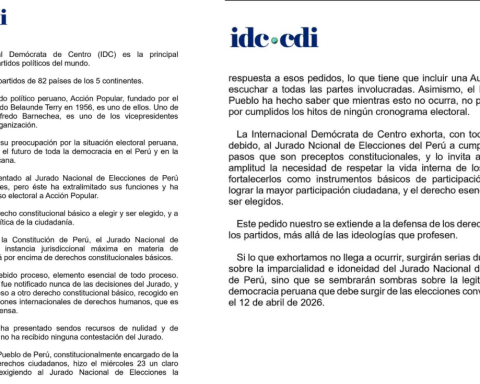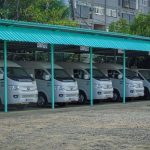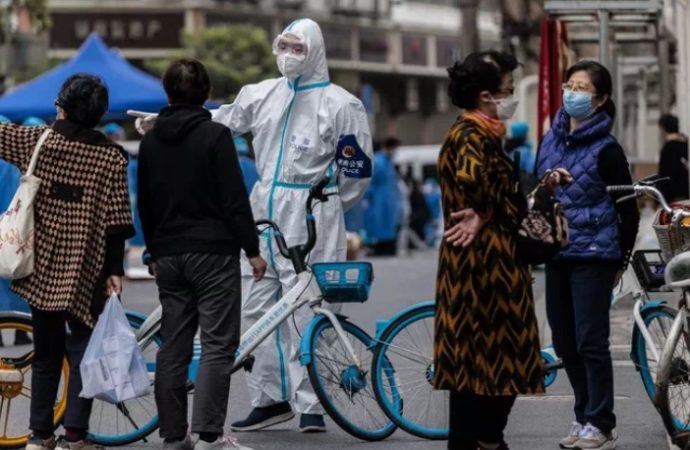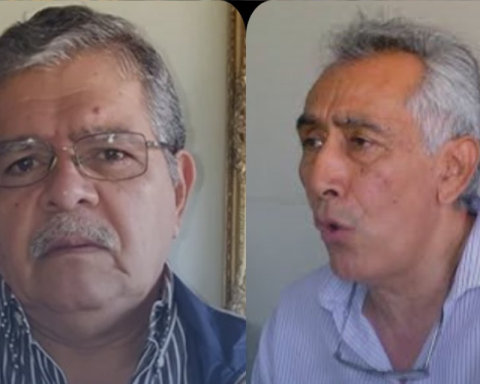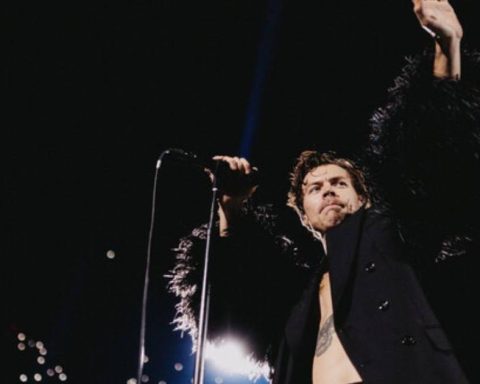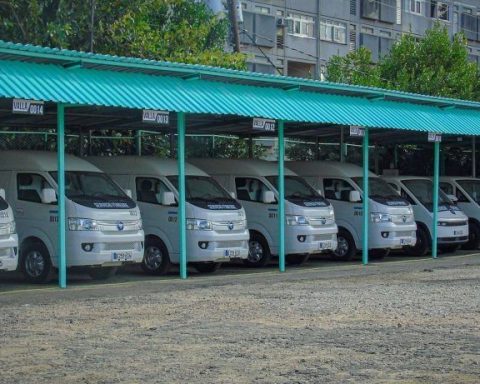The Junín region closes the week with the strongest strike in memory in the last two decades. The lack of attention from the Government since Monday and Thursday’s message from President Pedro Castillo in an accusing tone They were the fuel that motivated different unions to join this day of struggle initiated by farmers and transporters.
From the different provinces, the media gave an account yesterday of the complete blockade of the roads. The entrance to Huancayo, on the Breña bridge, remained completely closed to vehicles. Also the businesses in the city were forced to remain closed by the mobilized groups.
YOU CAN SEE: Midagri confirms entry of more trucks to the Lima Wholesale Market and Fruit Market
In the center of Huancayo, the headquarters of the provincial municipality, which is otherwise governed by Peru Libre, looked with its windows smashed. Inside, as you can see The Republic, the offices were trashed. An official from the commune told the press about the theft of computers and also of the loss of profiles and investment projects.
Leaving this enclosure, around ten in the morning, we saw that a first group of protestants He arrived at Calle Real with a harangue that summed up, in part, the outrage against the ruling party and the Palace tenant: “Castillo, Cerrón, the same crap!”
excesses This is how one of the offices of the Huancayo municipality remained after attacks on Friday. Photo: Caleb Mendoza/The Republic
difficult arrival
From another location, the ministers Roberto Sánchez (Mincetur) and Alejandro Salas (Culture) announced at a press conference the installation of a work table. For this purpose, four other ministers had arrived at the Jauja airport.
They were Óscar Zea (Agriculture), Óscar Graham (Economics), Félix Chero (Justice) and Alfonso Chávarry (Interior).
YOU CAN SEE: Carriers call for a national strike “in all modalities” after Castillo’s statements
Getting to Huancayo was not easy for them. Cardinal Pedro Barreto had an important role in this, who was heard by the pickets installed on the route between Jauja and Huancayo, to let them pass. After more than two hours, the delegation entered Huancayo on foot through the Breña bridge.
To this difficulty for the arrival was added later the most complicated: the refusal of the agrarian leaders to dialogue with them.
They demanded the presence of the president himself Peter Castle.
There was more than an hour of unproductive dialogue. Some leaders sought to start with the installation of Work tables. Others demanded that the president apologize for the expression of “leaders” who were “paid.”
From Saint Martin the president addressed a message to Huancayo offering apologies. “(Yes) in some of those statements there was a misunderstanding and I have to clarify it by apologizing or forgiving the people, I have to do it a thousand times because I never have bad intentions (…). We are going to guarantee not only dialogue, but we are also going to guarantee the right to protest,” he said.
YOU CAN SEE: What motivated the inaction of the Government to address the strike of carriers in Huancayo?
This, on the one hand, lowered the tensions inside the Wanka Coliseum. But Outside there were long days of clashes and the Police fired pellets, generating dozens of wounded.
And it is that many agrarian leaders also demanded to be listened to by the ministers. One of the demonstrators was injured in the sight as a result of the pellet shot.
Police. Arrest and wounded also on the sixth day. Photo: diffusion
Talks
On the march, inside the Wanka Coliseum, the serious weakness of the Presidency of the Council of Ministers (PCM) for the management of social conflicts was evident. The absence of a methodology during the meeting generated at various times the risk of breaking down the dialogue.
Added to this was the lack of clearly defined leaders among the farmers, to the point that they were ignoring each other.
YOU CAN SEE: Puno: heavy load carriers called a strike in Juliaca
With everything, the agrarian minister, Óscar Zea, achieved progress in the installation of a work table with the agrarian leaders, although in the end many decided not to sign the minutes.
Among the announcements contained in the document, as previously reported Oscar Zea, is the increase in the extraction of guano from the island and its sale at a social price from 20 thousand to 100 thousand tons per year. This, in response to one of the main demands regarding the high cost of fertilizers.
Also the Minister of Economy, Óscar Graham, made the announcement that the Government will limit the selective consumption tax (ISC) on fuel to 90%. This was also recorded in the minutes.
Advances in transportation
In parallel, The Minister of Culture, Alejandro Salas, advanced a meeting with leaders of the cargo transport sector and people transportation service. Here there was also an act that was also signed by the head of Economy, Óscar Graham. The document is clearer in the announcement of a supreme decree for the reduction of the ISC by 90%.
YOU CAN SEE: Keys to understand the radicalization of the current carrier strike in Huancayo
Moreover, the document sets a deadline: April 7.
Although in the meeting the carriers demanded the elimination of the Sutran (Superintendence of Land Transport), only the term “reorganization” is recorded in the minutes.
It was Minister Salas who had the greatest participation in these negotiations, along with a Transport official. In the end, the leaders of this sector did sign the act which, moreover, includes the commitment to unblock the tracks.
suspense
Another agreement was the development of a session of the Council of Ministers decentralized in Huancayo. This was scheduled for Thursday the 14th.
In fact, a block of the leaders of the agrarian sector chose to leave the Wanka Coliseum without stamping their signatures on the minutes. This discomfort was also notorious outside, where the clashes continued at the end of the meeting. In other words, the strike has not been lifted or suspended in its entirety.
The decentralized session on Thursday could be, perhaps, the breaking point, if the Executive presents progress in fulfilling the commitments and other specific announcements.
YOU CAN SEE: Pedro Castillo will go to Junín on Thursday, April 7 for a session of the Council of Ministers
And not only that. Cardinal Pedro Barreto was emphatic in pointing out that “Pedro Castillo has to come to Huancayo anyway and not just apologize.”
The citizen discomfort became extensive due to a third victim, this time in Jauja. This is the teenager with initials BJPL, who died on Friday after falling into the Yacus Riverwhile escaping from the tear gas launched by the Police.
While the talks were progressing in Huancayo, yesterday in Jauja there was a mobilization of citizens demanding justice.
Two other people died in previous days. Candy Magaly Hinostroza (31) was run over at the height of Concepción by a transporter who tried to flee from the pickets. And in Pilcomayo Another person was run over by a vehicle that was backing up through the blockades.
YOU CAN SEE: Huancayo: Police repress protesters who were around the Regional Government of Junín
At press time, there were farmers’ pickets along the right bank of the Central Highway.
Locks. Pickets were maintained yesterday in the main arteries of Huancayo. Photo: Wilber Huacasi/The Republic
Huancavelica threatens
A delegation of farmers from the province of Tayacaja (Huancavelica) also came to the city of Huancayo, who also joined the protests. However, they were not heard by the ministers. And here another serious conflict front can be opened against Castillo.
“Huancavelica has supported this president Castillo with more than 85% of votes, but unfortunately he is not responding to the farmers of small plots,” protested the agrarian leader Dilmer Solano, who threatened to call a strike in the region that solidly helped Castillo to reach the Palace.
Advertisements
The act of the agrarian sector contemplates the Government’s commitment to issue a decree to strengthen the use of fresh milk and higher guano extraction. Some leaders did not sign.
Approaches
“Political impact for the government”, by analyst Carlos Reyna
Protesters blame the government of the problems they are having with the prices of fuel, food and fertilizers. It is understandable because in the popular sectors it is difficult to distinguish nuances of whether this is a consequence of international prices that have risen or if it is a consequence of the government’s management. This is not only a demand for price reductions or some measures to mitigate the effect of these high prices, but it can also become a political protest against the Government. It is a complicated situation and it will have political consequences for the Government. The most important in the case of Junín it will be a deterioration of the political strength of Vladimir Cerrón and his political party in that region.
“Neither the Government, nor Congress”, by analyst Javier Azpur
There is a real problem in the increase in fuel prices that impact people’s various costs. We have a government that not only is not reacting to a scenario, but also seems geared towards applying austerity recipes. The worst thing is that people feel that neither the Government nor Congress have their problems on their agenda. A government that seems more interested in surviving, an official party that is interested in how many ministries it achieves, and a conservative majority that has no agenda other than the vacancy. what’s going on in Huancayo, Beyond the political game, it is that the population that voted for Castillo is the one that is going out to protest. He doesn’t understand why he doesn’t have her worries and problems at the top of his agenda.
